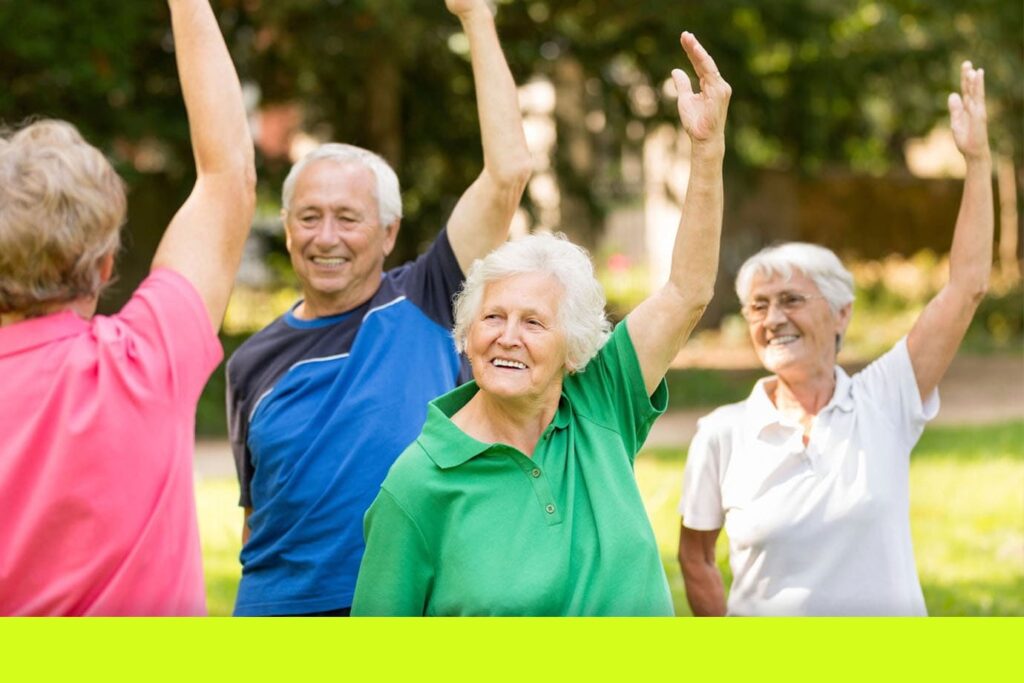
Sports for seniors – stay fit and active in old age
Being healthy and fit in old age – isn’t that what we all want? There is currently some positive momentum around the world regarding the willingness of older people to stay fit through sports for seniors. However, many older people are reluctant to engage in physical activity. Especially those who already suffer from health problems can do a lot for their health and well-being with light workouts at home.
Sports for seniors do not mean that you have to sacrifice your entire life and free time. Seniors especially benefit from short, regular exercise sessions, which can be done, for example, in the morning.
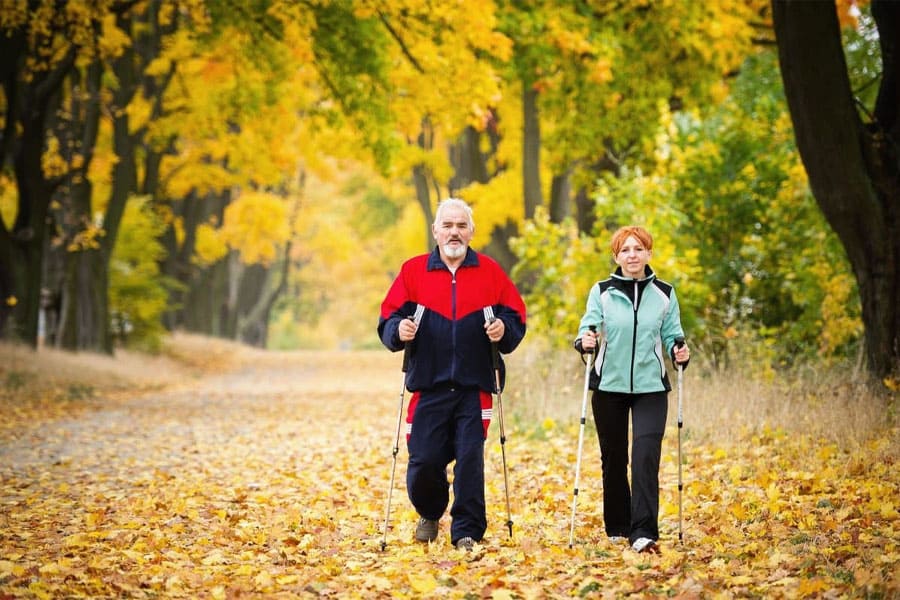

Reasons for sports for seniors
Sport is important at any age, but especially for seniors. Research confirms that lack of exercise is a major risk factor for cardiovascular disease. Regular physical activity, appropriate for age and physical constitution, prevents many diseases and signs of wear and tear in old age, and ensures good health and well-being. Exercise also regulates blood pressure and is recommended for people with high blood pressure.
The number and size of muscle cells begin to decrease as early as the age of 30. This is also called sarcopenia. Targeted muscle building improves performance and protects you from illness and accidents. The body is better protected in the event of a fall if the muscles and tendons are trained.
It is also worth noting the positive impact of sports for older people on the brain: physical exercise improves blood circulation and oxygen transport in the body, which also benefits the brain and can slow down the decline in performance in old age. In addition, physical exercise for older people can help improve sleep and prevent sleep problems.
How to start sports for seniors
If you want to get more exercise in your daily life by doing special sports for seniors, we recommend that you first consult with your doctor . First of all, you should find out if you are healthy enough to start doing sports for seniors. Your doctor can also recommend what kind of exercise is most beneficial for your health. In addition, if you have problems with your musculoskeletal system, your doctor can give you important tips on movements and exercises. For example, there are some exercises for your knees or back that you should avoid.
If you have not done any sports before, you should start with small sets of exercises, such as gymnastics and avoid overloading yourself with unfamiliar movements . Over time, you can expand your training in terms of the type of exercise, the number of repetitions or the intensity of the training.
Stay Fit and Active in Older Age with Sports for Seniors
If the intensity of the exercises below is not (or is no longer) enough for you and you would like to start an exercise program for seniors outside the home, there are many options. There are also sports clubs for seniors where they can exercise. Contact your insurance company or community centers for information on exercise programs for seniors.
If you are one of those seniors who are very active, healthy, and in great shape, why not take on a new challenge? Many cities and towns have targeted training opportunities for seniors, as group exercise is fun and should be more important than performance. Even if the requirements for earning a sports badge are challenging.
Exercises for pain – Knee pain

Knee pain
Squat Blocks with Wedges
Your all-purpose exercise helper for knee and leg pain
With a knee support that includes a step loop for secure standing, you can exercise at home on your own if you have arthritis, knee pain or leg pain. With it, you can specifically stretch your muscles and fascia to relieve pressure on your cartilage and joints.


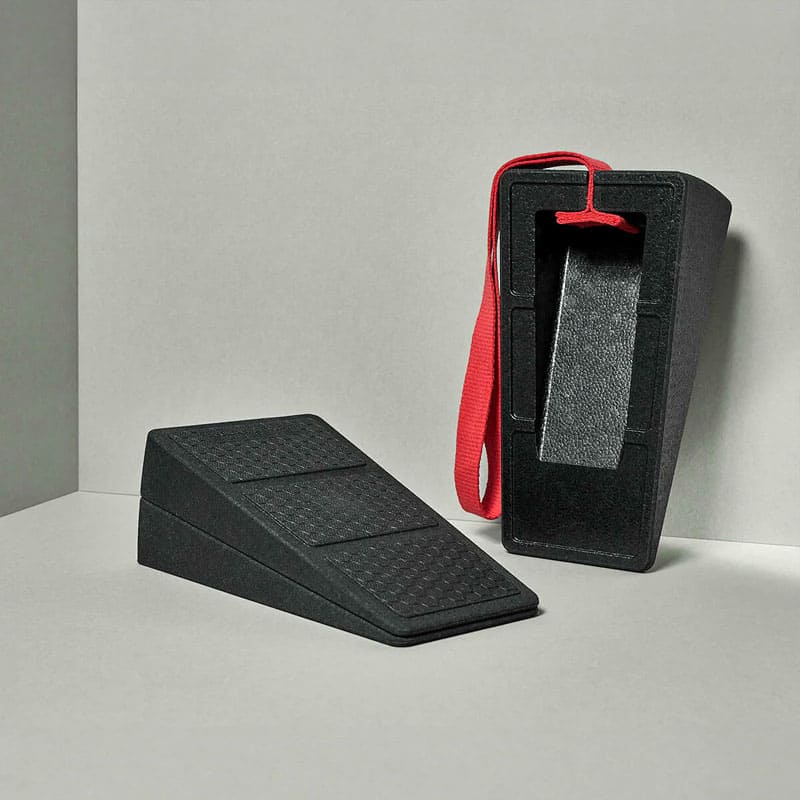
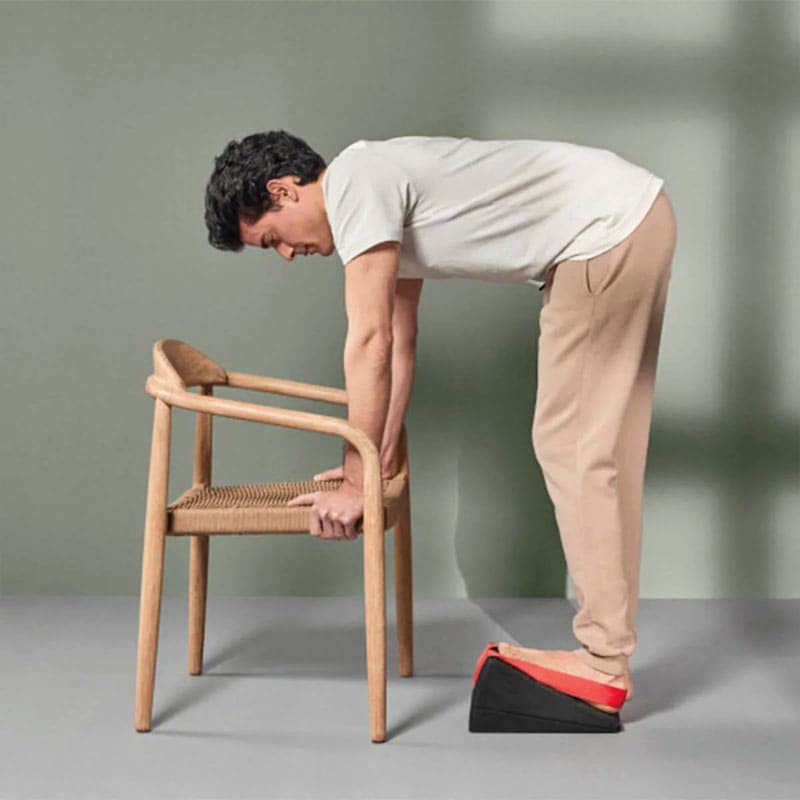
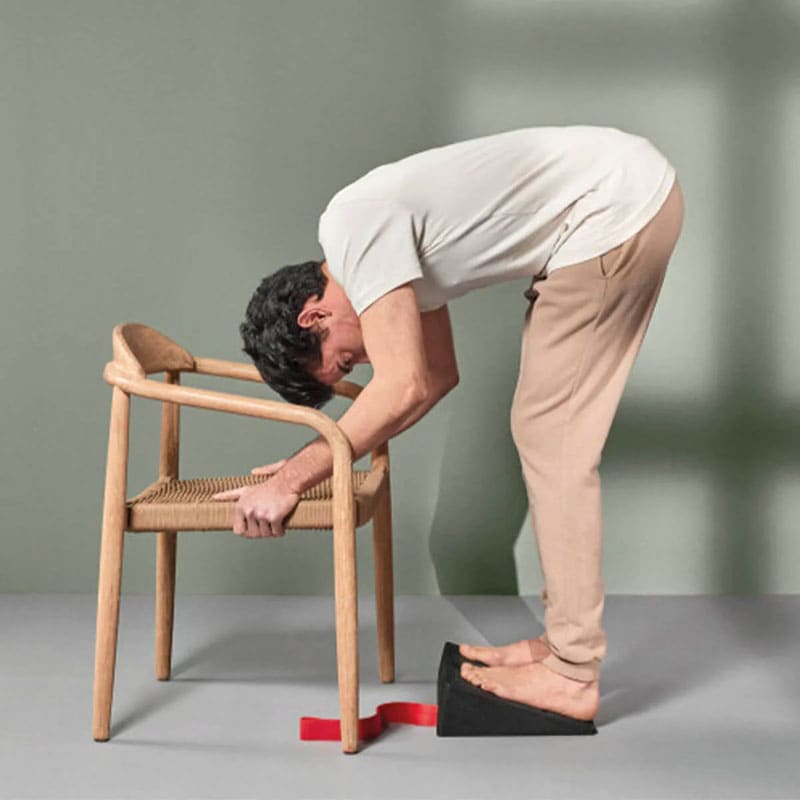
How to relieve knee pain on your own
The following 3 exercises will help you to relax tense muscles and fascia and thus relieve knee pain. To do this, you should try to achieve the highest possible intensity in each exercise. Breathe calmly during the exercises. Stretch only as much as possible to avoid subconscious tension.
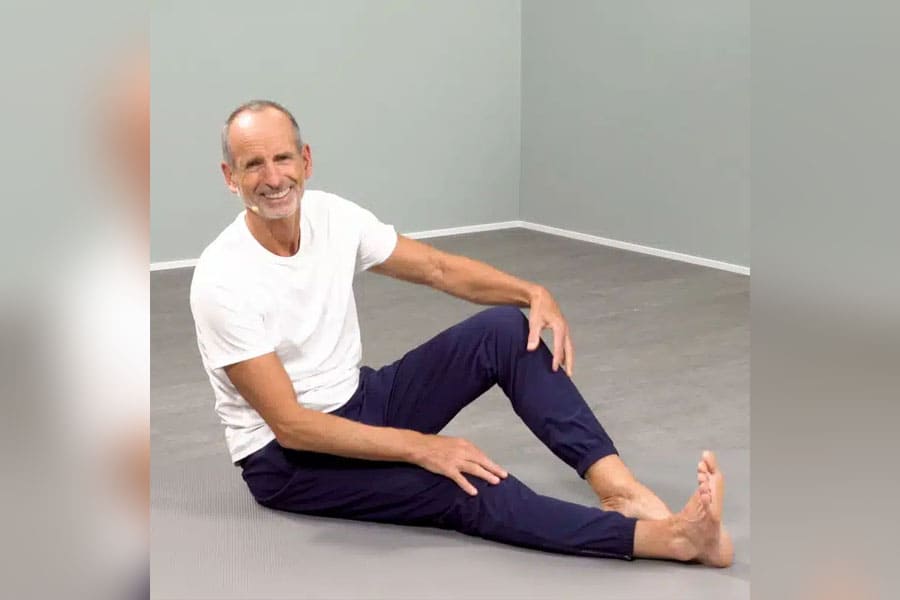
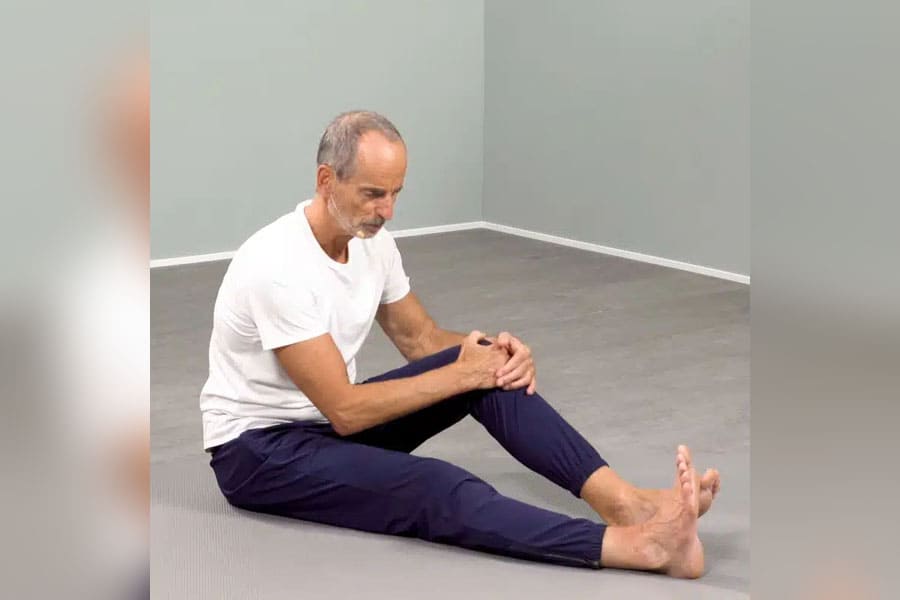
Back of the leg stretch for knee pain
- To perform this exercise, sit on the floor.
- First, stretch your right leg straight out and lift your left leg up.
- Now pull your right toes back, with your heel on the floor. Keep your leg in this position throughout the exercise.
- Grab your left knee with both hands and pull yourself forward. Make sure your back remains as straight as possible.
As you perform this exercise, you will feel a stretch in the back of your extended right leg, namely in the thigh muscles, as well as in the back of the knee and calf.
- Hold this pose for about 30 seconds.
- Now press your right leg and heel to the floor, as if you want to bend your right knee.
- After this conscious tension, you can try to pull your upper body even further forward and thus achieve a more noticeable stretch.
- Repeat the last two steps twice and hold the stretch for a moment at the end.
- After about 2 minutes, the exercise is complete.
- Then repeat the exercise again with the left leg.
Duration of the exercise:
Duration of the exercise:
approx. 2 minutes
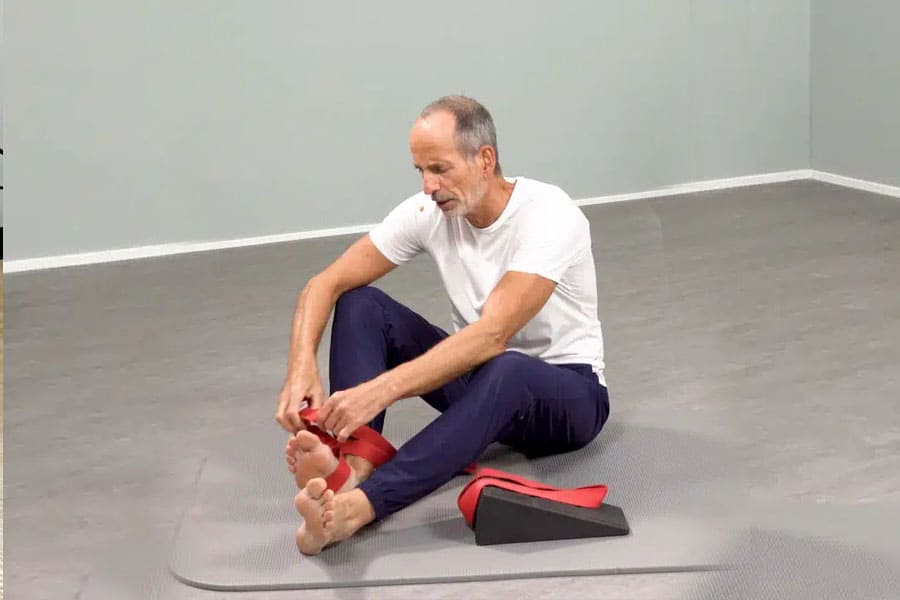


Hip stretch for knee pain
- Sit on the floor and place the loop over your right leg.
- Now lie on your left side and place the knee pad next to your hips.
- Grab the end of the loop with your right hand and slowly turn over onto your stomach. In this position, your right thigh should rest on the popliteal support.
- Pull the loop with your right hand to pull your right leg as close to your buttocks as possible and achieve a stretch.
With the aids, you can provide a significant “pre-stretch” already at the beginning of the exercise. This means that an important part of the thigh muscles is already well stretched and you can optimally adjust the intensity.
- Hold the initial stretch for about 30 seconds.
- Then press your right leg into the loop for a few seconds, but hold it firmly with your hand so that the leg does not move.
- After this, you can try to pull your foot further towards your buttocks and increase the stretch of your hip.
- Repeat the last two steps several times.
- After about 2 minutes, the exercise is complete.
- Repeat the exercise with your left leg to eliminate knee pain on both sides.
Duration of the exercise:
Duration of the exercise:
approx. 2 minutes
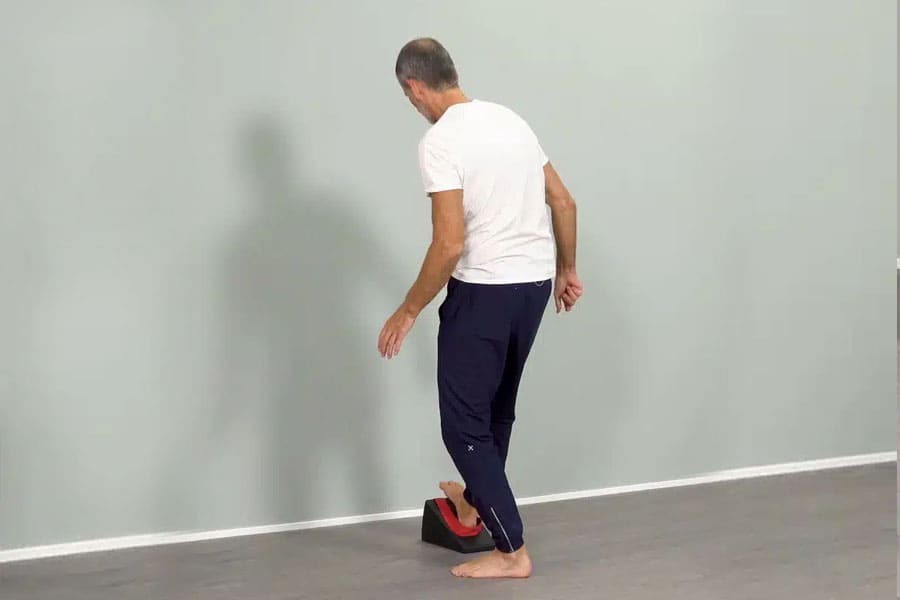

Calf stretch for knee pain
- Place the knee pad at some distance from the wall.
- Stand with your right foot on the wedge. The integrated loop ensures that you will stand steadily, even if you have set the knee pad to a significant angle.
By placing your leg at an angle, you can use the knee pad to achieve a significant pre-stretch at the beginning of the exercise. This way, you will be able to achieve a greater stretch, more easily regulate the intensity and increase it optimally due to safe tension.
- Keep your right leg, which is on the knee, straight and lean both hands on the wall. The left leg remains on the ground and provides greater stability.
- Slowly lean forward to stretch your right calf.
- Hold this stretch for about 30 seconds.
- Then press down on the knee pad with your front right leg.
- Relax again and try to increase the stretch by leaning even more towards the wall with your leg straight.
- Repeat the last 2 steps several times.
- After about 2 minutes, the exercise is finished.
- Then repeat the entire exercise with your left leg.
Duration of the exercise:
Duration of the exercise:
approx. 2 minutes
